ESTE ARTIGO CONTÉM SPOILERS
THIS ARTICLE HAS SPOILERS
The story of
“Magnificent Obsession” is as melodramatic as it gets. And when the novel is
adapted to film, it helps stars to be born, or better, paid attention to: both
male leads, already working in film, became superstars after starring in
“Magnificent Obsession”.
Dois homens se afogaram em um lago ao
mesmo tempo. Um deles era o famoso médico Dr. Hudson, que dava um mergulho. O
outro era o playboy Robert Merrick (Robert Taylor / Rock Hudson), bêbado após
uma festa que durou a noite toda. Havia apenas uma máquina para ressuscitação –
e ela foi usada em Robert, que foi resgatado primeiro. Dr. Hudson faleceu,
deixando uma viúva muito jovem, Helen (Irene Dunne / Jane Wyman) e também
muitas boas ações enquanto filantropo.
Two men
drowned at a lake at the same time. One was the famous physician Dr. Hudson,
out for a quick swim. The other was playboy Robert Merrick (Robert Taylor /
Rock Hudson), drunk after an all-night party. There was only one lung machine –
a resuscitation machine – and it was used on Robert, who was picked up first.
Dr. Hudson died, leaving behind a very young widow, Helen (Irene Dunne / Jane
Wyman) and many unsung works as a philantropist.
Dr. Hudson ajudava as pessoas em
segredo e nunca as deixava pagar pela ajuda – até que ajudar as pessoas se
tornou sua sublime obsessão. Isto é contado a Robert Merrick por Randolph
(Ralph Morgan / Otto Kruger), um artista que foi tocado pela bondade do Dr.
Hudson e por isso teve uma próspera carreira. Desde então, Randolph segue a
filosofia de vida de fazer boas ações sem esperar nada em troca.
Dr. Hudson
helped people in secret and never let them pay him back – until helping people
became a magnificent obsession to him. This is told to Robert Merrick by
Randolph (Ralph Morgan / Otto Kruger), an artist whose career was helped by Dr.
Hudson's goodness. Ever since then, Randolph follows the life philosophy of
doing good deeds without expecting a return.
Robert também é inspirado pela
filosofia, mas quer algo em troca após fazer boas ações: ele quer Helen, depois
de vê-la do lado de for a do hospital e se apaixonar. Ela, como esperado, o
detesta. Mas como ele não entendeu realmente a filosofia, acontece uma tragédia:
ao fugir das investidas de Robert, Helen é atingida por um carro e fica cega.
Robert is
inspired by the philosophy, too, but he wants something to happen after he does
the good deeds: he wants to have Helen, whom he saw outside the hospital and who,
as expected, loathes him. But because he didn't really understand the
philosophy, tragedy strikes: as Helen is trying to run away from Robert, she is
hit by a car and becomes blind.
Robert vai desistir? NÃO! Agora mais
bondoso, ele se aproxima de Helen que, cega, está reaprendendo a viver, e se
torna amigo dela, se apresentando como Doutor Robert. Ao mesmo tempo, ele fica
inspirado e decide transformar sua mentira em realidade e volta a estudar para
ser médico, cirurgião no cérebro, especialista na parte do cérebro que comanda
a visão.
Will Robert
give up? NO! Now kinder, he approaches the blind Helen, who is relearning to
live, and becomes her friend, presenting himself as Doctor Robert. At the same
time, he gets excited and decides to make his lie become true by going back to
college to become a brain surgeon, specialized in the part of the brain
responsible for the vision.
Uau. Que dramático. Esta história de
fazer chorar teve origem no romance “Sublime Obsessão”, escrita por Lloyd C.
Douglas e publicado em 1929 – o autor também escreveu o drama religioso “O
Manto Sagrado”.
Wow. So
dramatic. This tear-inducing story was originated in the novel “Magnificent
Obsession”, written by Lloyd C. Douglas and published in 1929 – Lloyd also
wrote the religious drama “The Robe”.
A diferença principal entre as duas
versões é óbvia: a de 1935 é em preto e branco, enquanto a de 1954 é a cores.
Além disso, em 1935 o médico é chamado de Hudson, enquanto a versão de 1954
voltou ao sobrenome original, Phillips.
The main
difference from both versions is obvious: the 1935 version is in black and
white, while the 1954 one is in color. Moreover, in 1935 the doctor is called
Hudson, while the 1954 version got back the doctor's original last name,
Phillips.
Alguns truques foram usados para que
as atrizes interpretassem mulheres cegas e continuassem andando e agindo
normalmente. Irene Dunne ficou olhando para baixo o tempo todo, e tinha os
maiores cílios já vistos em uma mulher cega no cinema. Jane Wyman usou óculos
escuros a maior parte do tempo em que interpreta Helen estando cega. Ambas são
convincentes no papel, mas só Jane Wyman foi indicada ao Oscar.
There were
some tricks to make the actresses play blind women but keep walking and acting
normally. Irenne Dunne kept her eyes down all the time, and supported the
hugest eyelashes a blind woman has ever had on screen. Jane Wyman wore mostly dark
sunglasses in her blind scenes. Both are convincing when playing
blind, but only Wyman was nominated for an Oscar.
Antes de
fazer “Sublime Obsessão”, Robert Taylor tinha um contrato com a MGM – contrato que
começou em 1934 com um salário de 35 dólares por semana. Ele não tinha muito
sucesso, por isso a MGM o emprestou para o estúdio Universal para este filme, e
Robert virou um sucesso do dia para a noite – de fato, havia filas quilométricas
para os cinemas, no auge do inverno americano de 1935, só para vê-lo em “Sublime
Obsessão”. Ele voltou para a MGM com um salário de 2500 dólares por semana e
permaneceu no estúdio com exclusividade por 24 anos. Numa conexão interessante
com o filme, conta-se que médicos disseram que a mãe de Robert morreria antes
dos 30 anos de idade, e então o pai dele – amigo de infância da mãe – foi estudar
medicina e conseguiu curá-la, provando que os médicos estavam errados.
Before making
“Magnificent Obsession”, Robert Taylor was under contract with MGM – the contract
started in 1934 with 35 dollars a week. He wasn’t very successful, so MGM
loaned him to Universal for the film, and Robert saw overnight success – actually,
lines were huge in the American winter of 1935 to see him in “Magnificent
Obsession”. He returned to MGM with a salary of 2500 dollars a week and was an
exclusive actor at the studio for 24 years. In a nice connection to the movie,
a story often told is that doctors once predicted that Robert’s mother would
die before she was 30, so his father – a childhood sweetheart – became a doctor
and cured her condition, proving the prediction wrong.
Rock Hudson
também estava com problemas na carreira em 1953. Alto, moreno e bonito – embora
a beleza não chamasse a atenção dos chefes de estúdio na época – ele interpretava,
desde 1948, coadjuvantes, protagonistas em filmes B e, em muitas ocasiões,
índios. Quando Jeff Chandler recusou o papel de Bob Merrick em “Sublime
Obsessão”, tudo mudou. Rock foi convidado pelo amigo, o diretor Douglas Sirk,
com quem já havia trabalhado duas vezes, e aceitou o papel. Mais uma vez,
quando o filme estreou, todos os olhos se voltaram para aquele jovem charmoso.
Era o começo de uma carreira de sucesso para Rock, com e sem Douglas Sirk.
Rock Hudson
was also in a bad place in his career in 1953. Tall, dark and handsome – the “handsome”
wasn’t really getting much attention – he had been playing, since 1948,
supporting characters, leads in B-movies and often Indians. When Jeff Chandler
refused the role of Bob Merrick in “Magnificent Obsession”, everything changed.
Rock was invited by his friend, director Douglas Sirk, with whom he had already
worked twice, and accepted the part. Once again, when the film hit the screens,
all eyes paid attention to that charming young man. It was the beginning of a successful
career for Rock, with and without Douglas Sirk.
Dos quatro
melodramas mais famosos feitos por Douglas Sirk nos anos 50, – e que são
provavelmente os filmes mais conhecidos de sua carreira – dois vieram de
histórias originais – “Tudo que o céu permite” (1955) e “Palavras ao Vento”
(1956) – e os outros dois eram remakes. Curiosamente, tanto “Sublime Obsessão” quanto
“Imitação da Vida” tiveram suas primeiras versões dirigidas por John M. Stahl
nos anos 30. Embora praticamente esquecido hoje, Stahl foi um dos fundadores da
Academia do Oscar, um diretor e produtor de sucesso. Seu filme mais famoso é “Amar
foi minha Ruína” (1945).
Out of
Douglas Sirk's four most famous melodramas of the 1950s, – and arguably the
four more famous of his whole career – two were original stories - “All that
Heaven Allows” (1955) and “Written in the Wind” (1956) – and the other two were
remakes. Curiously, both “Magnificent Obsession” and “Imitation of Life” were first made by John M. Stahl in the 1930s. Although almost forgotten today,
Stahl was one of the founding members of AMPAS, a successful director and producer.
His most famous film is “Leave her to Heaven” (1945).
Se você
gosta de melodramas ou precisa chorar um pouco, ambas as versões de “Sublime
Obsessão” irão servir ao propósito. Ambas prendem o espectador, são emocionantes
e bem feitas, uma dirigida por um mestre celebrado, outra por um mestre
obscuro. Mas preciso advertir: ver as duas versões num mesmo dia pode causar
desidratação.
If you are
into melodramas or in need of a good cry, both versions of “Magnificent
Obsession” will please you. Both are moving, engaging and well-done, one by a
celebrated master, another by an obscure one. But I must warn: watching both back-to-back
may cause dehydration.
This is my contribution
to The Remake of “They Remade What?!” blogathon, hosted by Laura at Phyllis
Loves her Classic Movies.

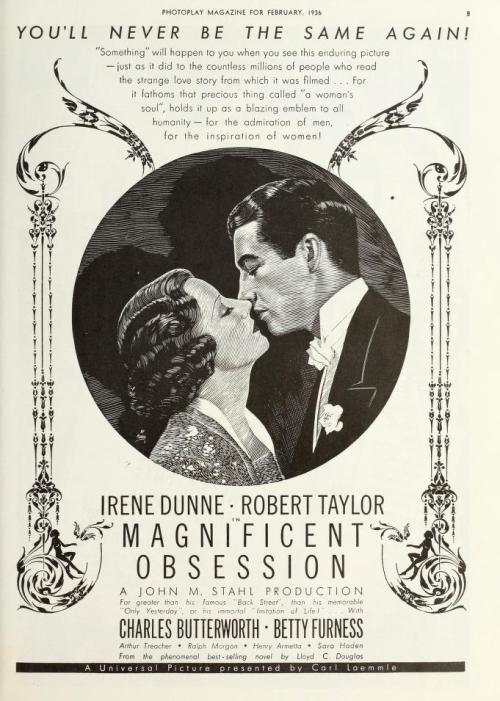
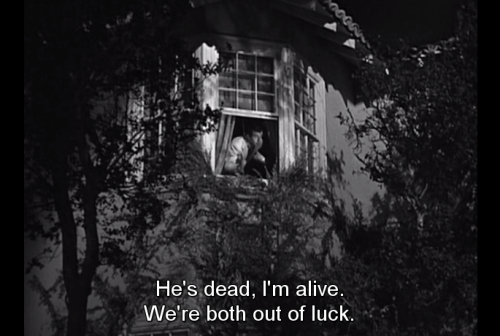



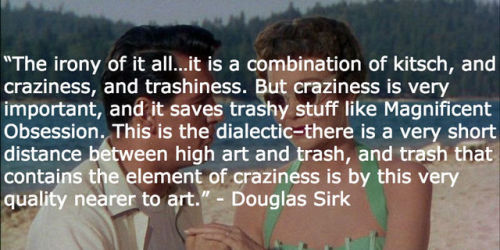


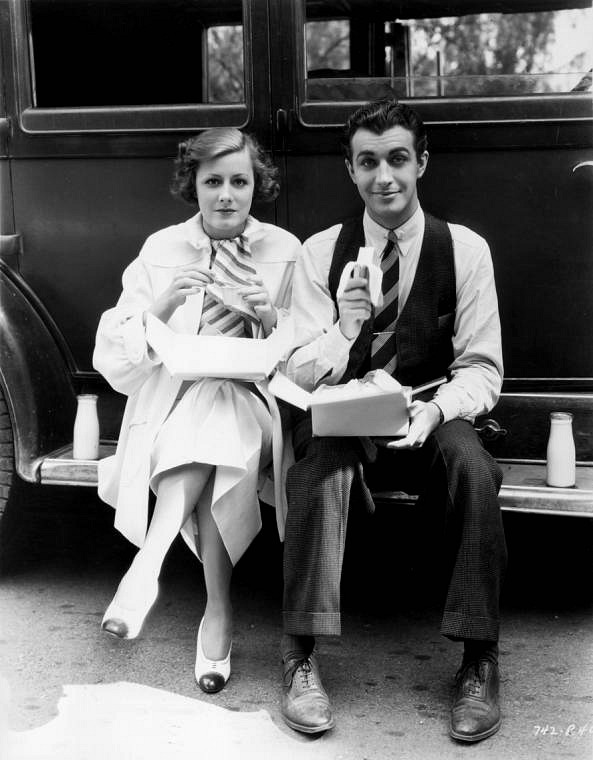
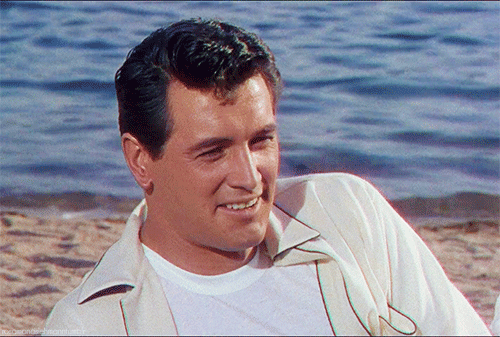
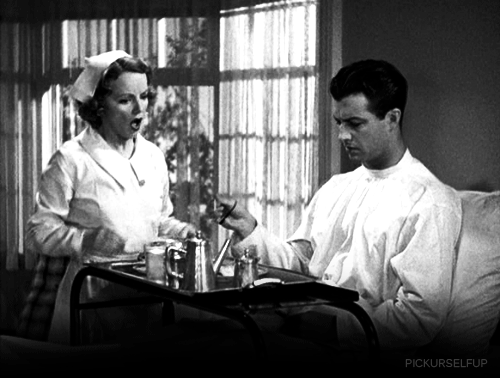
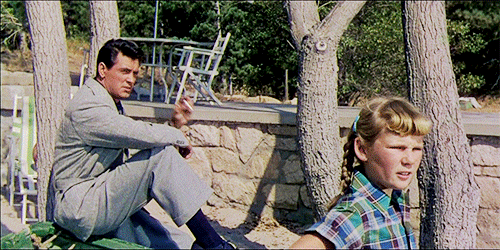

2 comments:
You wrote an excellent look at two fine movies. You may also have encouraged some to check out the novels of Lloyd C. Douglas.
When I watch a sure-fire tearjerker, I try to be on my own with no one around to tease me. When the hubby catches me bawling my eyes out he smiles and says "Having a good time?" Always.
I have not yet seen the original- but I love Irene Dunne- so I'm sure it will be good. Everyone needs those melodramatic films to watch now and again-and this perfectly fits the bill! Melodramatic double feature!
Post a Comment